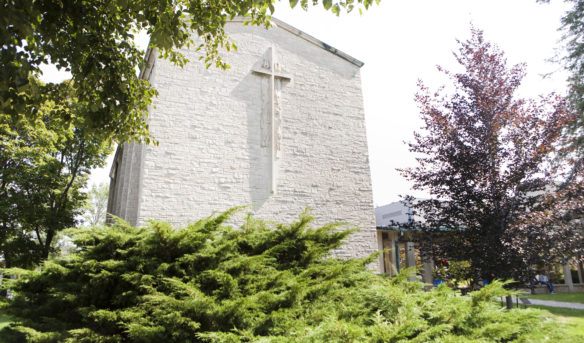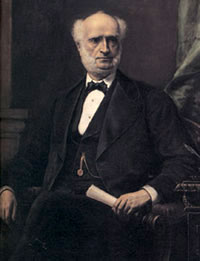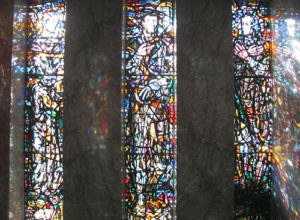
The mission of McMaster Divinity College is to develop effective evangelical Christian leaders for the Church, academy, and society through graduate-level education, spiritual development, and vocational formation.
In order to achieve our mission, McMaster Divinity College has committed itself to the transformational paradigm of “Knowing…Being…Doing…” as the basis of both our professional and research degree programs. All of our courses impart a body of knowledge (knowing) that enhances our students’ understanding, insight, and perspective on the important issues of the Christian faith. We are convinced, however, that education must push beyond the informational to the formational (being) and result in an inner transformation, where all members of the learning community are conformed to Christ’s image. This paradigm of education includes advanced vocational competencies (doing) so that graduates from our degree programs are equipped for what will be required of them as they move from graduation to their chosen ministry vocation.
The following symbols have come to visually represent this paradigm:
Knowing...
the Word of God
Being...
transformed into Christ's image
Doing...
the work of ministry
Some visual qualities are shared amongst all the icons, such as unity of form, size, and line. This unity communicates a common message, while at the same time, because they are also separate entities, retaining their specific aspect of the overall meaning. The shape and design allude to the Christian ichthus “fish” symbol and the triquetra. Generally, the look also reminds one of stained glass works. The three symbols reference the three-in-one nature of God.
Taken separately, the eye refers to knowing. “The eyes of the Lord keep watch over knowledge, but he frustrates the words of the unfaithful” (Proverbs 22:12). The leaf refers to being and symbolizes life and growth. “Blessed are those who trust in the LORD, whose confidence is in him. They will be like a tree planted by the water that sends out its roots by the stream. It does not fear when heat comes; its leaves are always green. It has no worries in a year of drought and never fails to bear fruit” (Jeremiah 17:7-8). The hand refers to doing. It has a shape and position that imply lifting as in lifting our hands to God or lifting up others to God. “Whatever you do, whether in word or deed, do it all in the name of the Lord Jesus, giving thanks to God the Father through him” (Colossians 3:17). “I will praise you as long as I live, and in your name I will lift up my hands” (Psalm 63:4).
McMaster Divinity College—Knowing the Word of God, Being transformed into Christ’s image, Doing the work of ministry. Knowing…Being…Doing…
Read a message from our President
History of McMaster Divinity College
 McMaster Divinity College is heir to an educational tradition that reaches back to 1838, when a Scots pastor named John Gilmour founded Canada Baptist College in the then commercial centre of Canada, Montreal. At the heart of the College was the theological curriculum. Unfortunately, circumstances led to the closing of the college in 1849.
McMaster Divinity College is heir to an educational tradition that reaches back to 1838, when a Scots pastor named John Gilmour founded Canada Baptist College in the then commercial centre of Canada, Montreal. At the heart of the College was the theological curriculum. Unfortunately, circumstances led to the closing of the college in 1849.
Eight years after the demise of the Montreal school, one of its Principals, Robert Alexander Fyfe, a Toronto pastor, became one of the leading advocates of the voluntary system of support for denominational schools. He favoured a Baptist college affiliated with a national nonsectarian university. In 1857, he and prominent Baptists established the Canadian Literary Institute at Woodstock in southern Ontario.
In 1881, William McMaster, a wealthy merchant, banker, and Senator of the Dominion of Canada, urged the creation of a theological school related to Woodstock, but situated in the city of Toronto. McMaster was generous in his financial support of the new school, Toronto Baptist College. The College prospered with a growing student body and a useful affiliation with the University of Toronto. Essentially a theological school that stressed the missionary and pastoral labours of its students, the College enjoyed impressive facilities, now the Royal Conservatory of Music, provided by the Senator on Bloor St.
Through a series of agreements with Baptist interests in Woodstock, plus a new commitment of funds from Senator McMaster, Toronto Baptist College secured from the Ontario Legislature in 1887 a charter for an independent Christian university. The new school incorporated the arts and sciences with the training of ministers. The name McMaster was adopted in honour of the chief benefactor, who died suddenly in 1888, leaving one of the largest bequests to an educational institution in Victorian Canada.
The University was persuaded in 1928 that the City of Hamilton afforded a better environment for McMaster University than Toronto. Thus the University of some four hundred students and its theological faculty of five moved to new facilities on Hamilton’s west end bordering Coote’s Paradise and the Niagara escarpment.
McMaster University was reorganized in 1957 allowing for governance of the institution to pass from the Canadian Baptists of Ontario and Quebec (CBOQ) to a privately-chartered, publicly-funded arrangement. The theological program was transformed into McMaster Divinity College, a separately-chartered affiliate College of the University with its own degree-granting powers, although the Faculty of Theology remains in name, with selected faculty members of McMaster Divinity College appointed to it. With its own Senate and Board of Trustees, McMaster Divinity College is situated at the heart of the McMaster University campus, sharing in its rich learning resources.
In 1960, with the help of donors and churches across Canada, McMaster Divinity College erected new facilities. These include a beautiful chapel, whose internal appointments, including numerous stone and wood carvings were designed by the renowned artist William McElcheran. This chapel later was dedicated in memory of the first McMaster Divinity College Principal, Nathaniel H. Parker (1898-1982). Just outside the chapel is the Matthews Memorial Tower, dedicated to the memory of The Honourable Albert Matthews (1873-1949), prominent Baptist layperson, long-time Chair of the Board of Governors of McMaster University, and generous benefactor of the institution. The tower’s stained-glass windows were designed by Ms. Yvonne Williams of Toronto.
McMaster was among the first Canadian universities to admit women, the first to confer a theological degree upon a woman, and the first to have a woman professor.
One of the major transformations in the life of McMaster Divinity College began in the 1980s, when some members of the Baptist Convention expressed concern regarding the general liberal theology of the College. They instigated a process that resulted in a major theological shift, whereby McMaster Divinity College has come to be one of the premier evangelical seminaries in Canada. In addition to all of the faculty being actively evangelical, MDC is a member of the Evangelical Fellowship of Canada, an active supporter of Christian Higher Education Canada, and the President is a member of the Fellowship of Evangelical Seminary Presidents.
In 1989, members of the Hurlburt family established the George F. Hurlburt Chair in Preaching, the first fully-endowed Chair at McMaster University or McMaster Divinity College. The purpose of this professorship is to elevate the office and gift of preaching in Christian ministry. The Hurlburt professorship also supports continuing education for those in ministry and has become the most distinguished Chair of its kind in Canada.
A second endowed Chair was inaugurated in 1990, the Centenary Chair in World Christianity. This Chair honours the one-hundredth anniversary of the founding of McMaster University with funds made possible by friends and churches of the CBOQ. The Centenary Chair currently supports work by McMaster Divinity College in the area of globalization of the Christian faith.
In 1995, a third endowed Chair was established, the J. Gordon and Margaret Warnock Jones Chair in Church and Ministry. This was made possible by gifts of the family of J. Gordon Jones, Dr. and Mrs. Edwin Howes, and others. The chair encompasses the work of pastoral ministry and the church in its various settings.
The Ministry Formation program – an integral part of ministerial preparation in the M.Div. degree, and an option for M.T.S. students – was endowed in 1997, with the institution of the Garbutt F. Smith Director of Field Education and Clinical Programs. McMaster Divinity College has been a leader in developing a supervised ministry formation program.
In 1999, the Howard and Shirley Bentall Chair in Evangelical Thought was created by the generosity of the Rev. Dr. Howard and Dr. Shirley Bentall of West Vancouver, British Columbia. The endowment supports a full-time faculty position in theology, systematic theology, and other fields related to the general discipline of theology.
In 2002, the latest of the endowed Chairs of McMaster Divinity College was established through the estate of a generous benefactor. This benefactor had a genuine concern for the church confronting the major ethical issues of our day, and provides for the teaching of a Christian worldview across the curriculum.
We are excited about where God is leading us in the future. We hope that this history conveys a sense of our continuing to move forward under the guidance of God’s Spirit, as we strive to develop effective, evangelical Christian leaders, just as our predecessors trained leaders for their day and age.
Learn more in the video below where Professor of Christian History, Dr. Gord Heath, shares with 100 Huntley Street on the history of Baptists in Canada:

